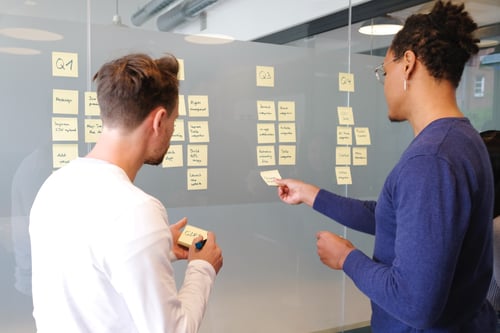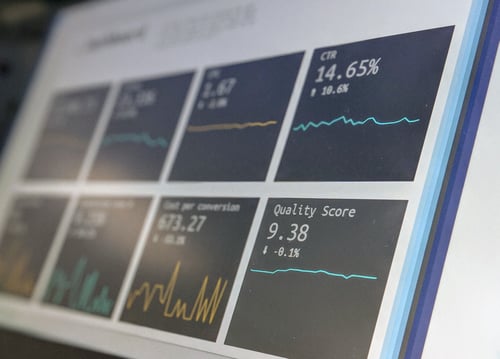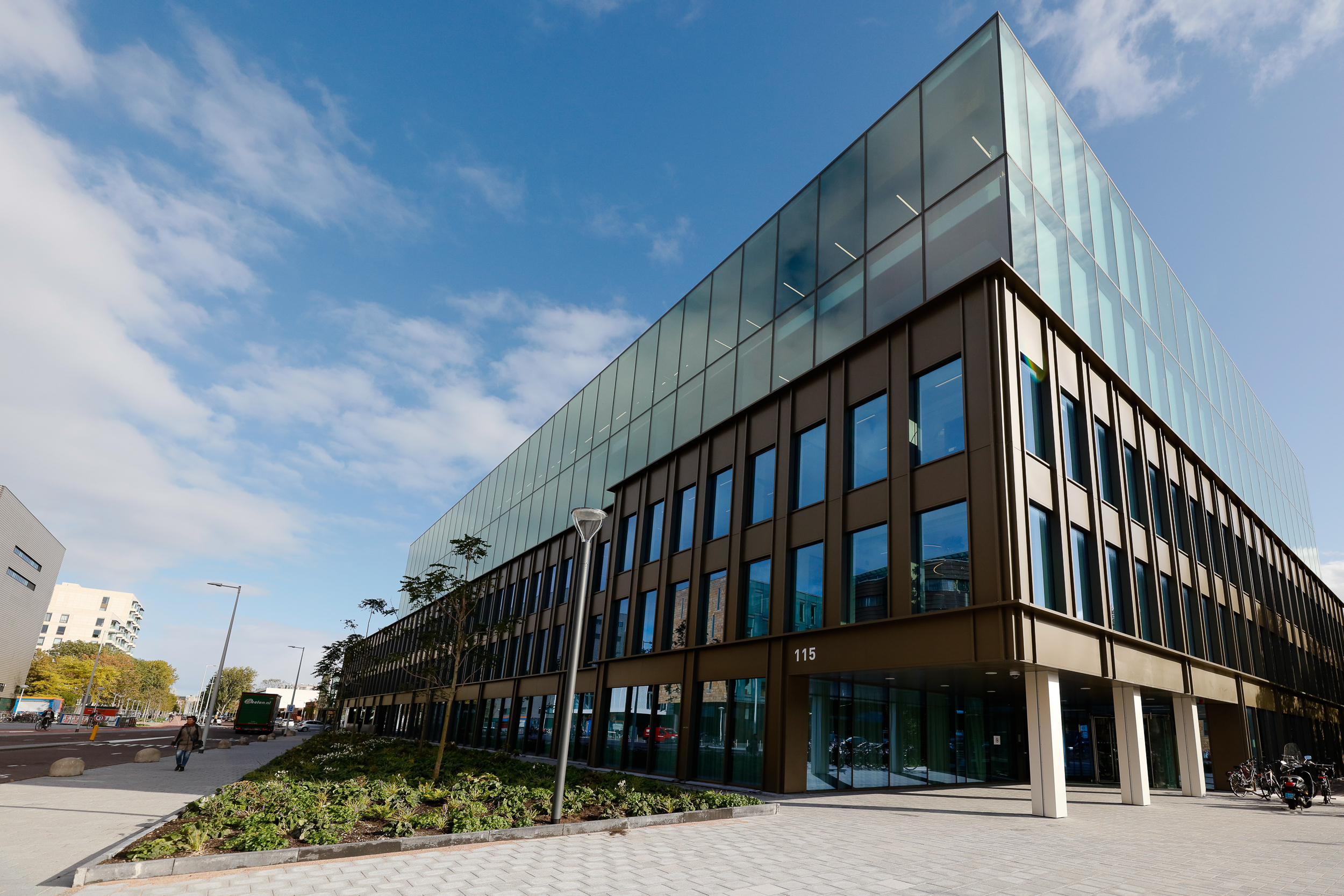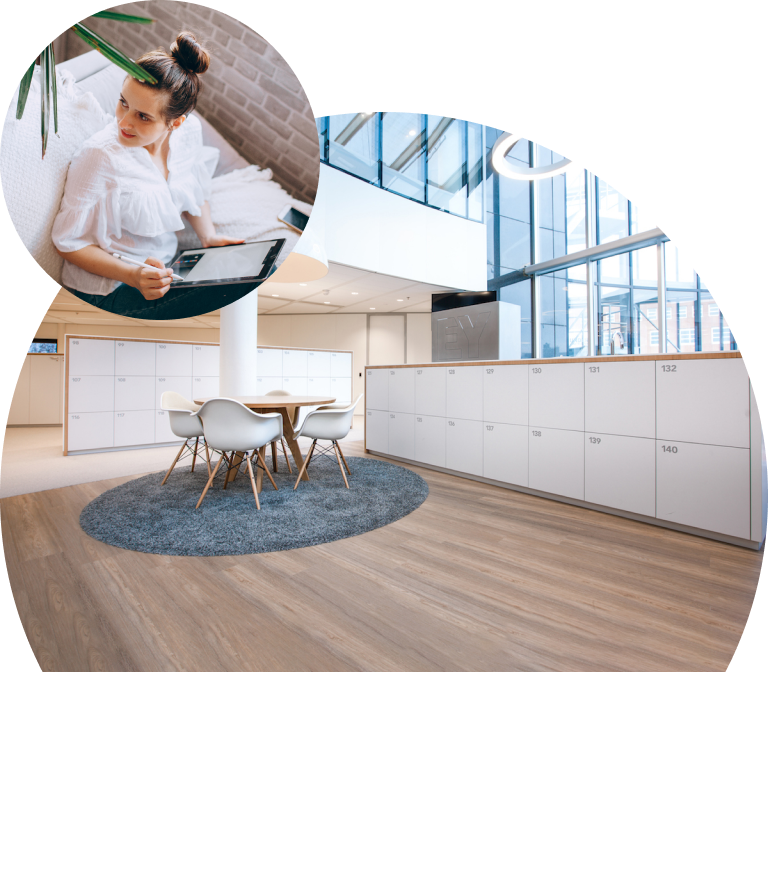1. Hybrid working is here to stay
As we finally emerge on the other side of the pandemic, expectations amongst leaders and employees have changed and one thing is certain: Hybrid working is here to stay. Research by Leesman shows that two thirds of employees prefer to be physically present at the office no more than 2 days a week.
This can be credited to factors such as individual freedom, higher productivity, cost savings, talent retention and sustainability. Some employees prefer working remotely as a way of maintaining their flexibility and personal lives, while others can save money by not having to commute between home and work.
According to research by Microsoft, employees need to be given a specific reason as to why they are required to physically show up in the office. And it’s easy to spot the reasons why employees prefer working from home – for example the elimination of commuting. Another report by Vox mentions Mathew, who works at a large payroll company in New Jersey, saying, “If I go into the office and there are people but none of them are on my team, I don’t gain anything besides a commute.”
For leaders, hybrid working empowers employees to work to their strengths and boosts productivity. For employees, hybrid working means more professional-personal balance and an improved happiness index. Multiple research reports show that companies that offer flexibility benefit from increased productivity and overall growth. Providing flexibility in decision-making on where to work and when, also increases employee engagement and helps in retaining top talent.
But, again, hybrid working is great, but it is not for everyone. Millennials and Gen Z prefer hybrid work to continue and, most probably will not even consider a job if it does not offer flexibility. If Millennials are the largest workforce, hybrid work is not going anywhere, so companies must be ready to adapt in 2023 and beyond.
‘’75% working in a hybrid way felt like they had freedom over where they work – Leesman’’
Read more: What is Hybrid Working and how to transform your workplace?

2. Workplaces need to be hubs of connection and collaboration
The future of work is likely to be a shared resource model. This means that people will be able to work from anywhere, with more flexibility and collaboration than ever before. It needs to be designed in a way that promotes interaction, community, and teamwork. Facilities managers need to now evolve from managing the workplace to managing experiences. It also means that organizations need to adapt their business models accordingly - including the ability to provide access to resources that help in collaboration such as flexible office layouts, technology, smart storage, amongst others.
The strongest reason that employees put forward to be present at the office is collaboration and interpersonal connection. The office is no longer a place where people must show up every day, work from fixed desks and then leave. It has transitioned into a place where people come in search for teamwork, socialization, and brainstorming. In other words, it’s a hub for collaboration and connection. To bring people back to the office, workplaces need to redesign their spaces to foster connection and collaboration. We no longer need workspaces because they are a necessity, we need workspaces designed in a manner that employees choose to spend eight hours there.
APG, the biggest Dutch insurance company, recently moved to their new office in Amsterdam to embrace flexible working. APG wanted to give its employees the chance to co-create their workspace, organize several interactive meetings and interventions, and help them to get the most out of the experience in the new state-of-the-art, sustainable building. Read the case study here.
In the near term, investing in quality space will be a greater priority than expanding the total footprint – JLL

3. Facilities managers and workplace managers need to understand different employee needs
As the physical workplace continues to evolve, the need for smarter and better workplace facilities will be critical in 2023. As a facilities manager, you help the organization navigate change. These days, that means bringing people back to an office that fits their needs. You cannot force people to come back; they might simply leave and move on to workplaces that offer flexibility. There is much at stake.
To bring people back to the office, FMs need to focus on what matters most to their people. And they need to keep those needs in mind while re-designing physical workspaces to accommodate hybrid working. Companies like Shell use extensive employee surveys to identify what their employees want and expect from a workplace, which they then use as a key ingredient of their floorplan design.
A fully dynamic workplace must focus on providing a seamless transition between a range of diverse types of space within the office building. Dynamic working offers employees maximum flexibility and minimum constraints on how, when, and where they work in and around the building – be it at a desk, or in a breakout lounge, meeting room, phone booth, or outdoor area. So, not only do FMs need to figure out what their people want, but they also have to make the highly flexible and dynamic workplace sustainable, space and cost-effective.
2023 will call for organizations to develop their hybrid working policy alongside setting up their smart technology infrastructure to meet new employee demands. Dynamic co-working spaces, collaborative zones, smart storage for employees and clients to interact need to be now a standard element in corporate office spaces.
Employees' preferences of hybrid work schedules vary greatly by organization, team, role and individual. There is no one-size-fits-all answer – Gallup
.png?width=500&height=311&name=Download%20the%20brochure%20(1).png)
4. Hotelification or ‘’On demand’’ services are the future of offices
In the previous few points, we have established that 2023 is all about workplace flexibility and facilities managers need to comprehend what these new employee demands look like. Employees do not come in every day and treat the office a little differently because they are using it nomadically. On the days they come in, they use different facilities in the office and leave once their work is done. So, offices need to evolve and offer them warmth and hospitality to motivate them to come back.
Employees now expect a different quality of facilities in the workplace, more related to on-demand, hotel-like experiences. They will be more observant when it comes to the cleanliness of the bathroom, the temperature of the conference room, the ease of using workplace lockers, etc.; just how they would behave if they were checking into a hotel. According to Leesman, there are some workplace features that if done exceptionally, may draw employees out of their homes: Computing equipment, Parking, Quiet rooms for working alone or in pairs, Remote access to work files or network, Desk/room booking system.
Let’s take an example: when your people come into the office, they want to book a few conference rooms for the meetings of the day and leave when done. They want unrestricted movement in the workplace and they don’t want to carry their stuff around the building for the entire day. Hotelification here typically means adding smart, on-demand storage to the workplace. In this way, your people can easily and effortlessly use storage, when and where needed, to store their personal belongings while moving around the office building.
A new report by Gallup highlights, hybrid work helps employees get the most out of their day while ensuring they feel connected to coworkers and the organization.
Offices are rapidly becoming curated spaces for experiences, teamwork, and celebrations. Adding facilities that can be self-service and used on demand can make returning to the office more attractive. It helps create exceptional workplaces that offer sustainable, inclusive, collaborative spaces with wellbeing embedded at the core of their design. This doesn’t automatically mean that every organization has to spent thousands of euros to ‘hotelify their workplace. Ultimately, it depends on the value it adds to the office and if that, in turn, churns into increased productivity and collaboration.
43% of workplaces will accelerate their investment in new or enhanced health & wellbeing amenities for employees – JLL

5. The great hybrid experiment needs to be backed by data
Facilities managers are still struggling to combine all the above elements into one office, where they walk a fine line between ‘forcing’ employees back into the office and aligning occupancy across days in the week. The result will be a global workplace experiment where testing becomes the first step for companies. And to elevate the performance of every aspect of their organization and enrich decision-making, companies need to have access to data.
Leesman says, to understand how employees interact with their workplaces, organizations need to know what forces are at play in pulling them between the office and home. Every interaction an employee has with their workplace will define and guide their thought process when next faced with the decision to journey to the office or not.
In this age of innovation, the most successful enterprises make decisions that rely on data. And having access to good-quality data is the key to these experiments. Workforce data and analytics around the interactions will help facilities and workplace managers make informed decisions, develop strong initiatives and achieve measurable goals. Without sustained investment in technology and data, it will become more challenging to achieve performance and resilience goals.
Let's go back to our previous workplace storage example. Storage has the ability to transform a company’s workplace dynamic and provide an engaging employee experience crucial to succeed in today’s changing landscape of work. However, without a reliable inventory of space and employee locker requirements, organizations occasionally struggle to produce a solid workplace storage strategy.
With smart lockers, workplaces can understand how office lockers are being used in real-time and make data-based decisions to optimize efficiency in locker usage. They can get a better view of locker usage, occupancy usage, and employee behavior and then use that data to adapt and optimize resources effectively.
However, we should also understand that digital transformation does not happen overnight It is a step-by-step process that requires vision, commitment and access to data to decide on workplace strategies.
13% of workplaces say they are collecting data on an ongoing or real-time basis using advanced analytics: JLL
In conclusion :
In 2023, Facility Managers need to stay open-minded and adaptable because the office will never be the same again. The future of work is not just about technology; it’s also about people—how they interact with each other and with the tools at their disposal. In order to stay competitive in this new era of work, we need more than just a few simple solutions: We need solutions that are suitable for everyone! And we are fortunate to learn from frontrunners like EY, Sanofi, Deloitte, and many others who are ahead of the curve. They have recognized the need for change and fully- adapted flexible working in their workplaces. And as Microsoft put it, as the world continues to evolve, organizations that take a culture-first, learn-it-all approach will come out ahead.

Want to know how smart locker systems increase workplace flexibility and support successful dynamic workplaces? In partnership with WORKTECH Academy, Vecos published a white paper that explores and reports on the changing needs for workplace storage.
DOWNLOAD OUR WHITE PAPER
Sources :
- Microsoft, 2022, Great Expectations: Making Hybrid Work Work
- Steelcase, 2022, The New Era Global Report of Hybrid Work
- Incisive, 2022, State of the Industry - Future of Work
- JLL, 2022, The Future of Work Survey
- JLL, 2022 Office Outlook
- Leesman, 2022, Purposeful Presence - How and why employees return
- Worktech Academy, 2022, Trend Report Q3 - Cause and effect: What’s
driving the flight to flexible?
- Gallup, 2022, The Future of Hybrid Work: 5 Key Questions Answered With Data



.png?width=500&height=311&name=Download%20the%20brochure%20(1).png)




.png)
